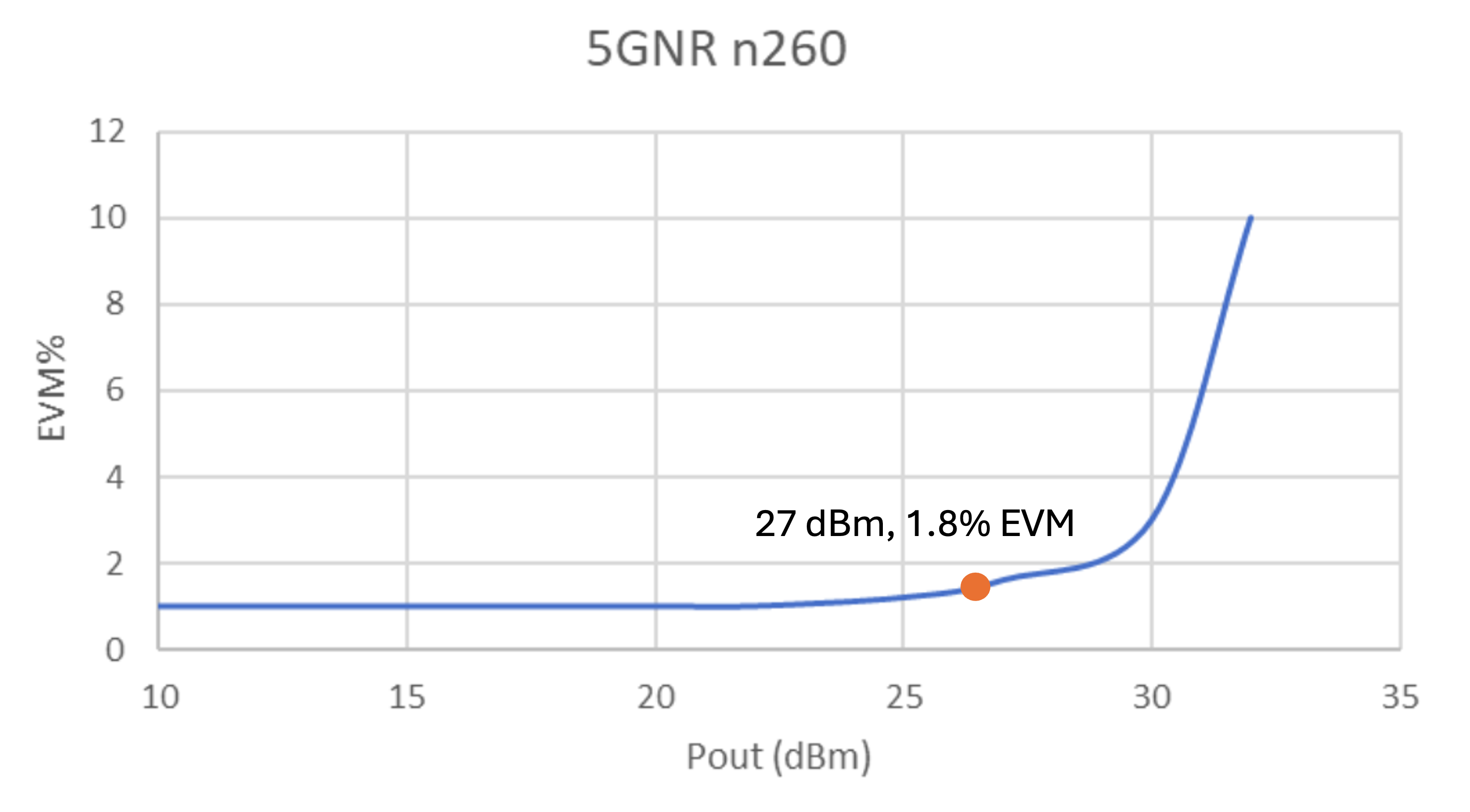
mmTron was started in 2020 to provide disruptive MMICs for mmWave applications. By disruptive, we mean significantly extending the performance of those key parameters that improve system performance.
Communications Care-Abouts
For communication systems, the parameters are data rate, link distance, and the attendant cost of the radio network. At the component level, the combined output power and linearity of the power amplifier in the transmitter drive the data rate and link distance. Longer links reduce the number of transmitters and repeaters and the resulting cost of the network.
Brute power, however, is not the goal, as saturating a semiconductor device to get higher power generates harmonics and intermodulation products. Power at a specified error vector magnitude (EVM) is the key metric, with the required EVM set by the modulation used by the communications system. The output power at this EVM becomes the metric for judging the quality of the power amplifier or transmitter.
The power consumption of the transmitter is also important, as it determines the heat sinking required to channel heat from the semiconductor devices. This thermal design is a major contributor to the weight and size of the transmitter, important because it can limit where the transmitter can be mounted and whether it can be carried and installed by one person. At the component level, the power-added efficiency of the power amplifier is the key metric for judging power consumption.
Historically, power amplifier designers focused on just two of these three metrics: output power, linearity, and power-added efficiency. Optimize the two most important parameters and accept the third, which was largely determined by the semiconductor technology, bias point, and matching circuits.
Market Need Meets Opportunity
Seeing the need to optimize all three became the goal for mmTron’s designers. They start with the choice of semiconductor technology for the application, then optimize the process, device bias points, matching circuit topology and element values. To achieve precision in the simulation — the goal is always first-pass design success — they had to improve their circuit and electromagnetic analysis tools and design flow. (Keysight published a case study on the electronic design automation (EDA) stack we used for the design of the TMC211, a 26 to 29.5 GHz power amplifier MMIC with 50 watts saturated output, which you can download here.)
Disruptive Performance
mmTron’s 37 to 41 GHz GaN power amplifier MMIC illustrates how this design philosophy and approach achieve disruptive performance. The first MMIC developed by mmTron, the TMC212 power amplifier was designed for the n260 5G band. With a 400 MHz 5GNR signal, it provides 27 dBm output power with just 1.8% EVM, truly state-of-the-art.

The three-stage MMIC has 23 dB small-signal gain and is matched to 50 Ω. It is nominally biased at +24 V on the drain, with a negative gate voltage adjusted to set the drain current to 400 mA. The TMC212 is offered in a 6 mm x 6 mm laminate QFN package. At 85°C ambient, the junction temperature of the GaN MMIC is below 140°C, which supports more than 10 million hours of reliable operation.
With its high linear power, the TMC212 is being used in fixed wireless access and “smart” repeaters. It’s one of a family of mmTron MMICs developed for the 5G NR bands (n257, n258, n259, and n261). Performance information on all mmTron’s devices are available on the Products page of our website.
